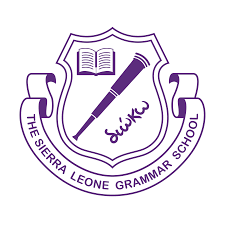School history
A History of Sierra Leone Grammar School
Established in 1845 with just 14 students by a group of missionaries known as the Church Missionary Society (CMS), Sierra Leone Grammar School (SLGS) was for 20 years the only secondary school in West Africa. The new school’s evolution was as rapid as its impact – by 1849, its roll call included students from the entire West African continent.
The beginnings of what would become SLGS can be traced back to the early 1800s and the efforts of the CMS to establish a training school for African missionaries in Sierra Leone. Their first attempt to this end, a temporary school started in 1816, literally collapsed in 1820 and its buildings were converted into a hospital. In 1827, the CMS had a far more successful outcome as Fourah Bay College (FBC) was established, far surpassing the original school and becoming Sierra Leone’s first Western-style university. The intention by this time was to provide as high a standard of education as possible, preparing accomplished students to be teachers and missionaries to their own countrymen. Instruction included reading, writing, music, arithmetic, geography as well as Bible history and doctrines. However, this created a problem for the existing curriculum in Sierra Leone.
By the 1840s, it had become evident that the academic standard of Fourah Bay College was getting much higher than that of the regular school system. This meant that it would become difficult to recruit new entrants into FBC from the existing school structure. It was therefore necessary to establish a new secondary school, to create high standard local candidates for the university. The CMS procured land at Regent Square in Freetown for a grammar school – and the term Regentonian was born. The building, formerly the residence of the Governor of the Colony until 1841, was known as the “house of arches” due to the imposing arches on all sides of the building.
From 1840 -1858, FBC was headed by Rev. Edward Jones, an African American who provided opportunities for the students to train as teachers by apprenticing them to teach in Sunday schools and employing them as district visitors. It was during Rev. Jones’ tenure that Sierra
Leone Grammar School as we know it was born. Fourteen junior students of FBC were transferred from that college to start the Grammar School.
In the 175 years that followed, Sierra Leone Grammar School has become the leading secondary education institution in West Africa, through the independence of Sierra Leone and weathering the debilitating effects of a civil war. In the 21st Century, a huge, school-wide regeneration is in process, revitalising it’s curriculum, embedding ICT and STEM skills, installing modern facilities and rolling out online learning – all of which brings a model of world class learning to the school, Sierra Leone and the wider region.


